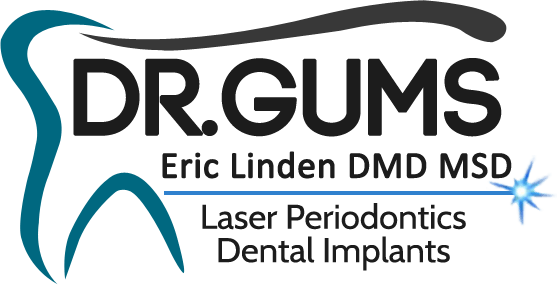CHICAGO–March 9, 1999–University of Chicago internist and anesthesiologist Dr. Michael Roizen is making headlines with his RealAge program, which he designed to provide people with a scientifically valid age reduction plan.
You may have read about it, seen him on “Oprah” or “20/20” or even bought his book. And maybe you were surprised that flossing your teeth ranks right up there with taking your vitamins, quitting smoking and reducing stress as one of the top five things you can do to reduce your “RealAge.” In fact, keeping your teeth and gums healthy allows you to add 6.4 years to your life, according to Roizen’s plan.
“It makes sense,” says Dr. Robert Schoor, president of the American Academy of Periodontology (AAP). “Periodontal (gum) disease is a bacterial infection of the gums, and that bacteria can travel into the bloodstream and other parts of the body, putting a person’s health at risk.”
Recent research has found that periodontal infection may contribute to the development of heart disease, diabetes, respiratory diseases and premature, underweight births.
If you want to keep your teeth and gums healthy, and take care of the rest of your body at the same time, it’s not quite as simple as regular flossing. The AAP offers 10 suggestions to help you ensure good oral health:
- Use the right equipment. A soft-bristled toothbrush allows you to reach every surface of each tooth. If the bristles on your toothbrush are bent or frayed, buy a new one. Ask your dentist or periodontist to help you decide which among the wide variety of oral care products on the market may be most helpful for you.
- Choose a toothpaste with fluoride. In conjunction with brushing and flossing, fluoride products can reduce tooth decay by as much as 40 percent.
- Brush properly. To clean the outside surfaces of all your teeth, position the brush at a 45-degree angle where your gums and teeth meet. Gently move the brush in a circular motion several times using short, gentle strokes. To clean the inside surfaces of the upper and lower front teeth, hold the brush vertically. Make several gentle back-and-forth strokes over each tooth and its surrounding gum tissue. To clean the biting surfaces of your teeth, use short, gentle strokes. Spend at least two-and-a-half minutes brushing. This may not sound like much, but keep in mind it is about the same amount of time as one song or five commercials if you brush with the radio or TV on.
- Floss properly. Gently insert floss between the teeth, using a back-and-forth motion. Do not force the floss or snap it into place. Guide the floss to the gumline. Curve the floss into a C-shape against one tooth. Slide it into the space between the gum and tooth until you feel slight resistance. Using both hands, move the floss up and down on the side of one tooth. Remember that there are two tooth surfaces that need to be cleaned in each space, so repeat this technique on each side.
- Find out if your teeth are free of plaque. Use a disclosing tablet or solution, available at your local drugstore. Chew the tablet until it dissolves. Swish vigorously and empty your mouth. Rinse with water. Then look in a mirror. The stains will indicate where plaque is still present.
- Stop using tobacco products. In addition to other serious illness linked with smoking, tobacco users are at increased risk for periodontal disease.
- Watch for signs of periodontal disease. Periodontal disease is often silent, meaning you may not have symptoms until its very advanced stages. However, people with periodontal disease may experience:
- Bleeding gums during brushing
- Red, swollen or tender gums
- Gums that have pulled away from the teeth
- Persistent bad breath
- Pus between the teeth and gums
- Loose or separating teeth
- A change in the way your teeth fit together when you bite
- A change in the fit of your dentures
- Be aware of habits such as teeth grinding, which can put excess force on the supporting tissues of the teeth and speed up the rate at which these tissues are destroyed. You may need to have a dental professional fit you with a mouth guard to wear while sleeping if you grind your teeth at night.
- Tell your dental professional about any medications you are taking, as some drugs such as oral contraceptives, antidepressants and certain heart medicines can affect oral health.
- See your dentist and periodontist regularly. Regular professional cleanings will remove tartar in places that your toothbrush and floss have missed. Regular periodontal appointments are an important part of your oral hygiene program to prevent gum disease and keep your teeth for a lifetime.
A referral to a periodontist in your area and free brochure samples including one titled How to Brush and Floss are available by calling 800-FLOSS-EM or visiting the AAP’s Web site at www.perio.org.
The American Academy of Periodontology is an 8,000-member association of dental professionals specializing in the prevention, diagnosis and treatment of diseases affecting the gums and supporting structures of the teeth and in the placement and maintenance of dental implants. Periodontics is one of nine dental specialties recognized by the American Dental Association.
For more information, contact the AAP Public Affairs Department at 312/573-3243 or 312/573-3242.

